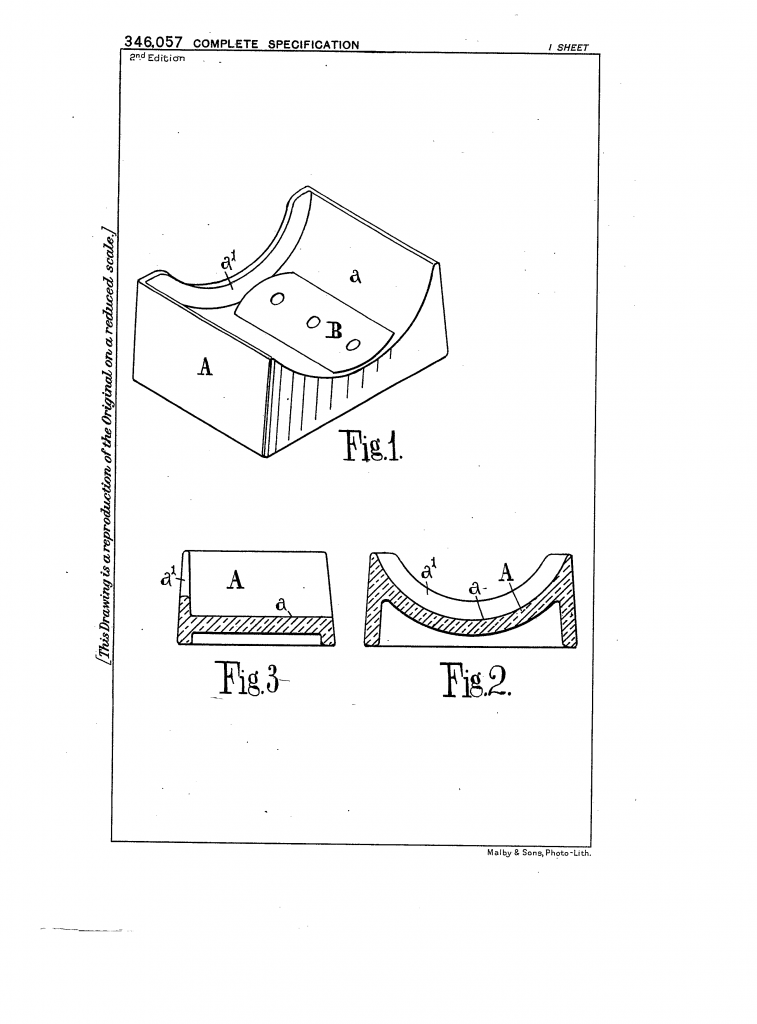Thanks to razors.click, I recently learned that in early 1930 Mr Joseph Richard Lillicrap filed a patent application for a uranium glass hone for razor blades. And while we may both wonder why you would hone a blade, and freak out a bit over, y’know, uranium in the bathroom… well, let me try to explain.
While a blade today may be just pennies, it was just pennies back then too.. but pennies were worth more. So it made sense to eke as much out of each blade, just as a user of a cartridge razor will try to get as many shaves as possible out of each cart.
So there was a lot of different razor blade sharpeners on the market. Previously I’ve mentioned some before, including a desktop model, one you could make yourself, and a glass one. Sharpening razor blades just made sense. Double so if you had just lived through the Depression. Waste not, want not.
Uranium glass was also not uncommon between the wars. Consisting of regular glass with various amounts of uranium added, it was – and is – mostly harmless. The addition of the uranium was mostly for the yellow-green colour and florescence. Uranium glass became a lot less common after the War, in part due to the fact that uranium was needed elsewhere.
The actual uranium glass hone is fairly straight forward. A semi-circular glass shape. Raised edges to keep the blade in place. An acid etched surface to increase the honing action. And that is about it.
Granted, the patent uses a lot more words to describe it:
The hone or sharpener A is moulded as a block of glass with a curved concave surface a extending longitudinally and a flange or shoulder a1 at one edge to serve as a guide and to keep the razor blade B in position during the operation of sharpening.
The glass of which the hone or sharpener A is made may be of known composition but a glass containing uranium as an ingredient is at present preferred.
The curved concave surface a of the hone or sharpener is etched or frosted to remove the natural glaze or polish of the lass as it is found that an etched or frosted surface gives the best sharpening effect.
From Great British patent #346,057

To use, the shaver would take the blade out of the razor and place in the hone. After optionally adding an abrasive paste, he would move it back and forth a few time. Flip it over to repeat, then put it back in the razor and shave.
Or in the words of the patent;
For sharpening the razor blade it is placed flat on the concave surface a of the hone A as shown with its end against the flange or shoulder a1 and moved lightly to and fro over the curved surface.
From Great British patent #346,057
For once a patent is clear and straight forward…
The need for sharpening razor blades might be less today than it was during and after the Depression. Even so, a hone like this should work well. And who wouldn’t want a softly glowing, green vintage glass hone in their shave den?
I’m not at all convinced that there is a marked for a newly made uranium glass hone, though. Razor blades are, after all, just pennies per blade.
You can read the full patent at razors.click, and also at Espacenet.
As a side note; a reddit-user by the name Le Zouave points out that you should not hone modern blades. While I haven’t tried myself – despite having a few vintage razor blade sharpeners – his reasoning makes sense; You will strip the coating of the blade.
